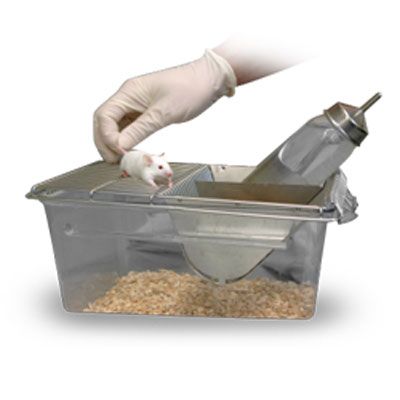Making new drugs
Drug development is time consuming and costly. Typically, it takes more than 12 years. The process is very tightly regulated both for safety and to make sure drugs are effective. Hundreds or even thousands of chemical compounds are investigated, but most of them are abandoned early on. The ones that are not dropped are extensively tested, both in vitro – which means in the test tube and petri dish – and in animal studies. That is before the long process of clinical trials begins, when drugs are tested in humans.
After all that, many drugs still fail to get approved as medicines often because of dangerous side effects or because the drug proves less effective in people than first hoped.
Computer Modelling
Computers are becoming more and more important in the drug discovery process. When researchers have discovered something that seems to cause disease, they can use computers to design a molecule that should be effective against it. Thousands of chemical compounds can then be compared to the computer model in a fast automated process, to find a few hundred that might be the basis of a new medicine.
Back to the topIn vitro research
Drugs are first tested in individual cells in vitro, which means in a dish or test tube rather than an animal. This process, which is largely automated, identifies the basic properties of each compound. Large numbers of compounds are abandoned at this stage because the way they interact with cells makes them unsuitable.
The remaining compounds are studied in more detail in tissue preparations (tissue culture) which are multi-cellular and can sometimes be grown artificially in the lab.
Back to the topExploratory development
Of the thousands of potential drugs screened, only a few will reach the development stage. Scientists begin to investigate the effect of the drug on more complex bodily systems, rather than just individual cells or sections of tissue. Some of this can be done with computers and other techniques that mimic the workings of organs such as the lungs or liver. When it is impossible to use these methods, animals are used instead, usually mice.
An important part of exploratory development is investigating how to deliver the drug, making sure it reaches the parts of the body it needs to reach and doesn’t accumulate where it isn’t wanted. This work is usually done in mice and rats and provides valuable information about the action of chemical compounds that can be used in future studies, even if the particular drug being studied turns out to be ineffective.
Back to the topFull development
If the drug seems promising after the initial development studies, it will be investigated in more depth. At this stage more animal studies are usually needed, sometimes involving more than one species, although mice are still the main model used by far. Non-animal studies will still happen alongside the animal work. The non-animal studies on cells and tissue, give information about the specific effects of a drug at a particular place in the body, while animal studies give information about the effects of the drug on a whole, living system, and how it affects the interactions between different organs of the body.
These studies will include a full assessment of drug delivery systems, and the first safety tests. They will look at how the drug might interact with other medicines and look for other possible side effects.
Back to the topClinical Trials
Clinical trials are medical studies in humans. They are usually done in three phases. The phase 1 trials involve small numbers of healthy volunteers and are intended to test the findings of previous studies in animals and non-animal models, to see how much of the drug is safe in people and to make sure it doesn’t have any unexpected effects.
At phase 2, the drugs are tested in patient groups, to test their effect on the disease and to keep and eye on safety.
Phase 3 trials involve larger numbers of volunteers. Half the group get the new drug and the other half are given a harmless substitute called a placebo. Neither group know which one they are taking, and the people giving out the doses don’t know either. This is called a double-blind trial.
Back to the topLicensing of medicines
Medicines which are successful at every stage can apply for a product licence before it can be prescribed by doctors. The application for licence must be submitted to the appropriate regulatory body for the country where the medicine will be sold. Each regulatory body has their own submissions and approval processes.
Here in the UK it is through the Medicines and Healthcare products Regulatory Agency.
Back to the topLast edited: 3 March 2021 12:03

